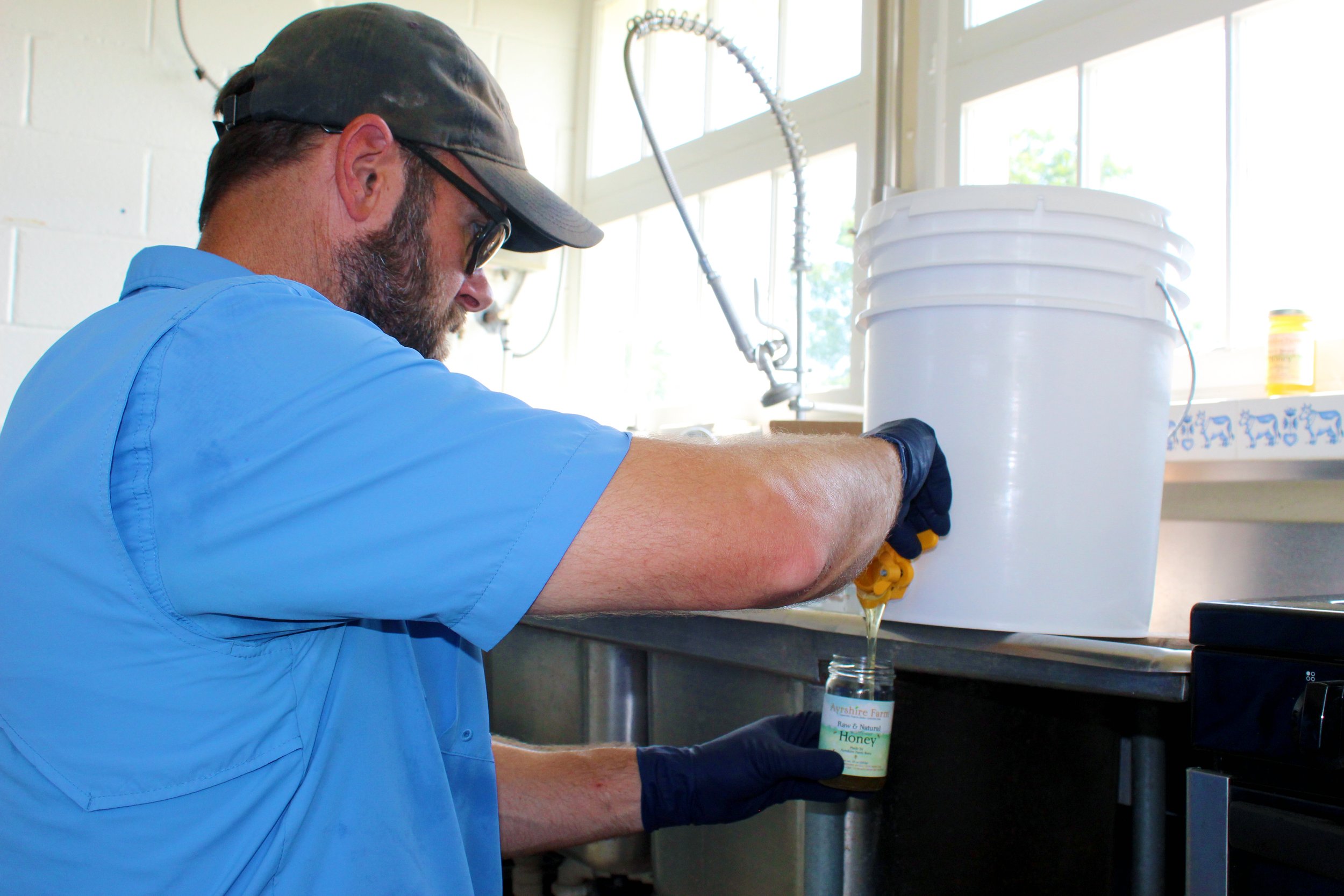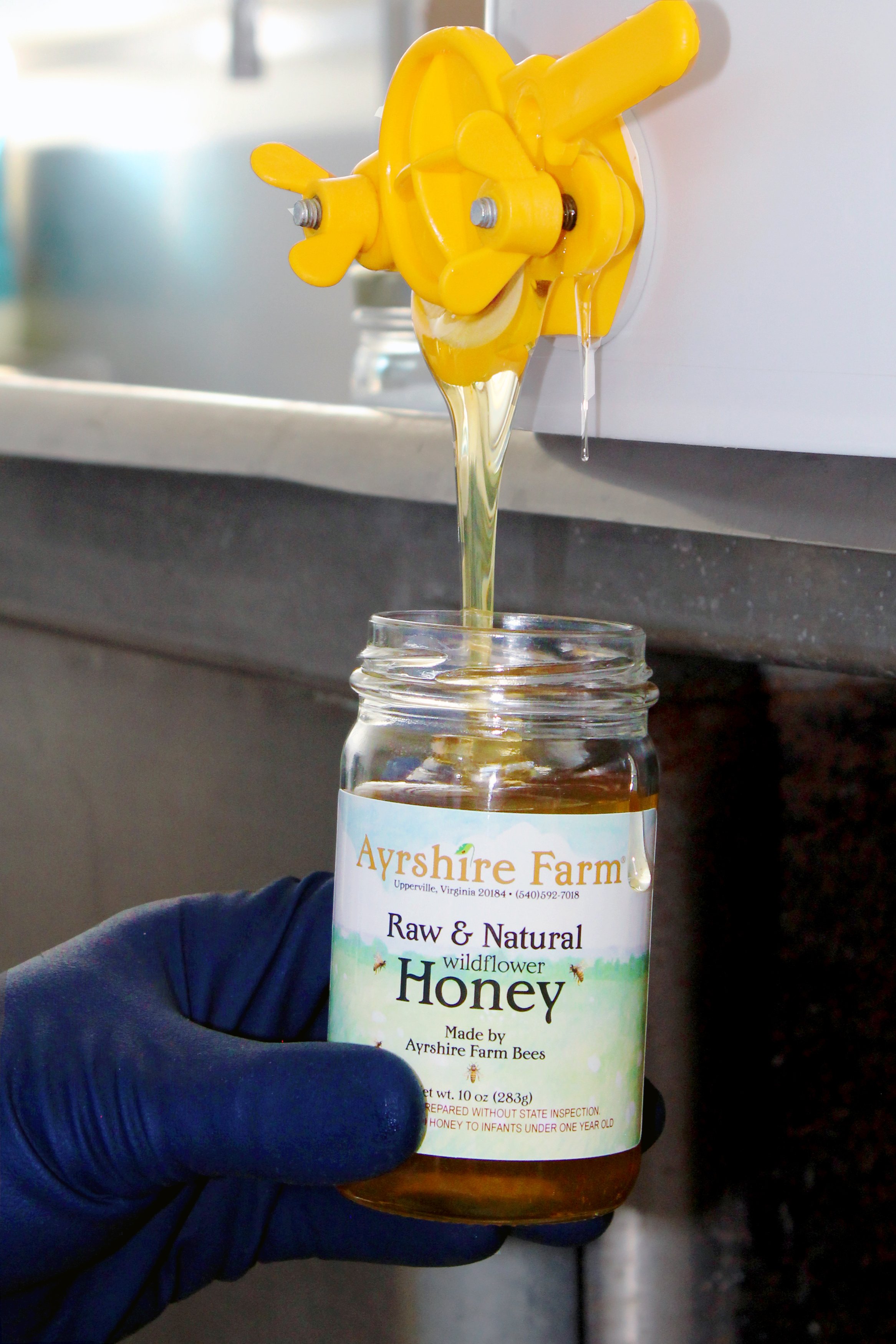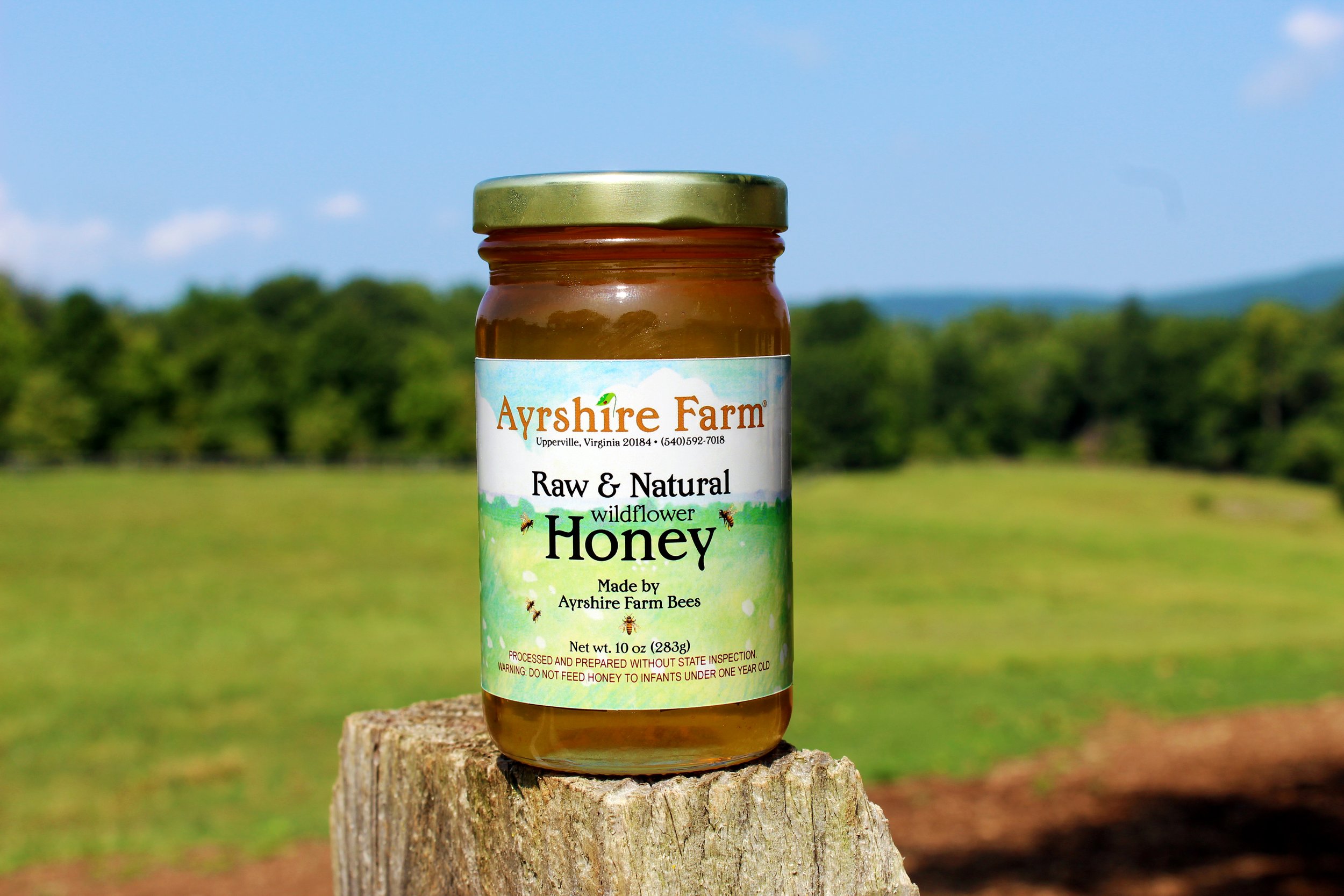Honey Harvest: Part III
Weeklong endeavor concludes with jars of honey for sale
It’s been a long journey for Ayrshire’s honey to travel from hive to jar, despite never leaving the farm. After spending the week harvesting, uncapping, extracting, and filtering, the time has finally come for the last step in the honey-making process: Bottling day.
This season has been a tough one for the bees, with drought conditions limiting their ability to forage pollen and nectar from flowers and fruit trees. Nevertheless, the farm crew has managed to harvest some 300 pounds of honey while leaving ample reserves for the colonies to make it through winter.
The bottling process moves slowly but steadily. There’s nothing elaborate about it: No fancy equipment, no special technique — just lots of patience and a fairly quick reflex. Simply open the spigot on the bottling bucket, hold a jar beneath it, and let ‘er rip. Knowing just when to turn off the valve to fill the jar to the brim without any spillage takes some practice, but Chris Windham, Ayrshire Farm’s beekeeper, has a decade of experience. He goes about the work one 10-ounce jar at time until all the buckets are empty.
Ayrshire Farm’s honey is unpasteurized, a quality prized for its rich source of antioxidants and anti-inflammatory properties. We also think it tastes better this way — pure and unaltered, equally delicious slathered on toast or poured over Locke’s Mill pancakes as it is straight from the spoon.
Now that it’s jarred, the next destination for Ayrshire Farm’s honey is your kitchen table. Our Meat Box customers have a chance to purchase a bottle — or several — at the farm once a month on pick-up day. (Learn more about ordering a Meat Box here.) Honey is also sold by our other businesses: At nearby Hunter’s Head Tavern, right down the road in Upperville, and at Locke’s Mill, our historic gristmill on the Shenandoah River just over the mountain in Clarke County. Hunter’s Head is open daily 11:30 a.m. to 9:30 p.m. and Locke’s Mill is open to visitors on the first and third Saturdays of the month from 11 a.m. to 4 p.m.
READ MORE. Honey Harvest: Part II | Honey Harvest: 1






